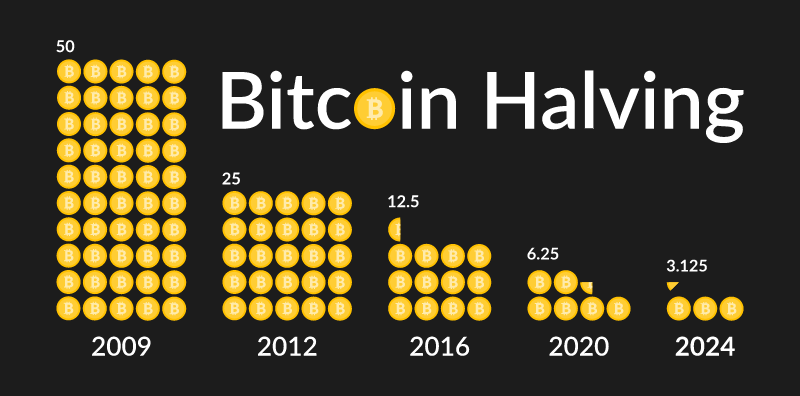Public vs Private Blockchains: Key Differences, Use Cases, and Which One to Choose?
Blockchain technology has revolutionized the way data is stored, verified, and transmitted. Since the launch of Bitcoin in 2009, blockchain has evolved far beyond just cryptocurrencies. Today, it underpins solutions in finance, supply chain, healthcare, government, and more. However, not all blockchains are created equal. One of the most critical distinctions in the blockchain world is between public blockchains and private blockchains.
In this article, we’ll explore the differences between public and private blockchains, their advantages and disadvantages, key use cases, and help you decide which is more suitable for your specific needs.
🔍 What is a Blockchain?
Before diving into the comparison, let’s quickly recap what a blockchain is.
A blockchain is a distributed ledger technology (DLT) that records transactions across a decentralized network of computers (nodes). It ensures data integrity, transparency, and immutability. Each new record (or block) is linked to the previous one, forming a chain. Once recorded, data on the blockchain cannot be altered retroactively without altering all subsequent blocks.
Now, let’s look at how blockchains are categorized.
🧩 What is a Public Blockchain?
A public blockchain is a decentralized network that anyone can join and participate in. It is open-source, transparent, and permissionless, meaning anyone can read, write, and validate transactions.
✅ Key Features:
- Decentralized: No single authority controls the network.
- Permissionless: Anyone can join the network and participate.
- Transparent: Transactions are publicly visible and traceable.
- Immutable: Once data is added, it cannot be altered.
- Security via consensus: Secured through Proof of Work (PoW), Proof of Stake (PoS), or other mechanisms.
💡 Examples of Public Blockchains:
- Bitcoin
- Ethereum
- Litecoin
- Cardano
- Solana
🧱 What is a Private Blockchain?
A private blockchain is a permissioned network where access is restricted to specific participants. It is typically controlled by a single organization or a consortium. Private blockchains are used primarily in enterprise settings where privacy and control are paramount.
✅ Key Features:
- Controlled access: Only authorized participants can view or write to the ledger.
- Centralized governance: Managed by a central authority or group.
- Faster transactions: Due to fewer nodes and less complexity.
- Privacy-focused: Transactions are not visible to the public.
💡 Examples of Private Blockchains:
- Hyperledger Fabric
- R3 Corda
- Quorum (by JPMorgan)
- IBM Blockchain (based on Hyperledger)
⚖️ Public vs Private Blockchains: Side-by-Side Comparison
| Feature | Public Blockchain | Private Blockchain |
|---|---|---|
| Access | Open to everyone | Restricted to invited participants |
| Decentralization | Fully decentralized | Partially or fully centralized |
| Governance | Community-based | Controlled by a single organization or group |
| Transaction Speed | Slower due to many nodes | Faster due to limited nodes |
| Consensus Mechanism | PoW, PoS, or similar | Custom or simpler consensus protocols |
| Transparency | Fully transparent | Limited or no transparency |
| Security | Very high due to decentralization | High but reliant on internal controls |
| Immutability | Immutable, tamper-proof | Can be modified under authority |
| Scalability | Often a challenge | Easier to scale in a controlled environment |
| Cost | Higher (energy and computing intensive) | Lower due to fewer resource requirements |
🎯 Use Cases of Public Blockchains
Public blockchains are best suited for scenarios where trustlessness, transparency, and decentralization are important.
1. Cryptocurrencies
- Bitcoin and Ethereum are the top examples.
- Ideal for peer-to-peer payments and decentralized finance (DeFi).
2. NFT Platforms
- Platforms like OpenSea and Rarible run on public blockchains to allow decentralized ownership of digital assets.
3. Decentralized Applications (dApps)
- Apps built on Ethereum, Solana, etc., that run without centralized servers.
4. Decentralized Autonomous Organizations (DAOs)
- Community-led organizations with governance and voting mechanisms on public chains.
🎯 Use Cases of Private Blockchains
Private blockchains are preferred in enterprise or institutional environments where privacy, efficiency, and compliance are more critical than decentralization.
1. Supply Chain Management
- Track goods and materials from origin to customer while sharing data only among authorized parties.
2. Banking and Finance
- Banks use private blockchains for faster settlements, identity verification, and cross-border transactions.
3. Healthcare
- Secure sharing of medical records between institutions while complying with regulations like HIPAA.
4. Government and Legal Systems
- Record keeping, digital identity management, and voting systems with controlled access.
🔐 Security Considerations
Public Blockchain:
- Highly secure due to decentralized architecture.
- Resistant to tampering and censorship.
- Vulnerable to 51% attacks if a single entity controls most of the network (rare in large networks like Bitcoin).
Private Blockchain:
- More vulnerable to internal attacks or misuse.
- Requires strict access controls and audits.
- Security depends on the trustworthiness of the governing organization.
⏩ Speed, Efficiency, and Cost
- Public blockchains often face congestion (especially during peak times), leading to higher transaction fees and longer confirmation times.
- Private blockchains are faster and cheaper due to limited users and optimized consensus algorithms.
🤔 Which One Should You Choose?
Choose Public Blockchain if:
- You need decentralization and transparency.
- You’re building a public-facing application (e.g., crypto wallet, DeFi app).
- You want censorship resistance and open innovation.
Choose Private Blockchain if:
- You need control over participants and data access.
- You’re working within a regulated industry (like banking or healthcare).
- Performance and confidentiality are more important than decentralization.
🧠 Hybrid or Consortium Blockchains: The Middle Ground
Some organizations adopt hybrid or consortium blockchains, which combine the strengths of both public and private blockchains.
- Hybrid blockchain: Public-facing components + private ledger for internal data
- Consortium blockchain: Controlled by a group of organizations instead of one
Example:
- Energy Web Chain: A consortium blockchain for the energy sector.
🌐 Final Thoughts
Public and private blockchains serve different purposes in the blockchain ecosystem. Public blockchains offer trustless, decentralized networks, ideal for building open applications and enabling global participation. Private blockchains offer control, efficiency, and privacy, making them suitable for enterprise adoption.
Understanding their fundamental differences is essential for developers, businesses, and investors alike. Whether you’re building the next DeFi app or a supply chain tracking solution, choosing the right type of blockchain is a crucial step toward success in the Web3 world.




